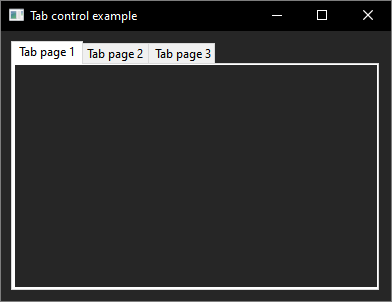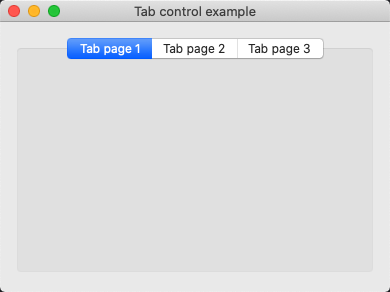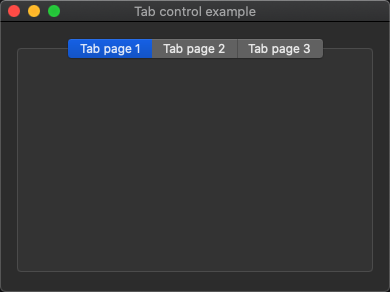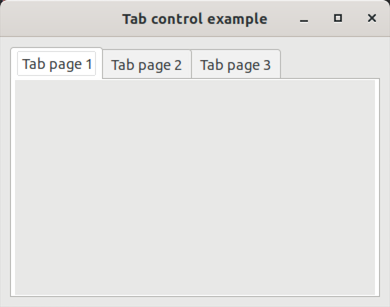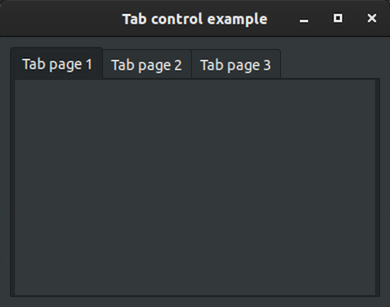The following code example demonstrate the use of tab_control container.
#include <xtd/xtd>
class form1 :
public form {
public:
form1() {
text("Tab control example");
controls().push_back(tab_control1);
client_size({390, 270});
tab_control1.anchor(anchor_styles::left | anchor_styles::top | anchor_styles::right | anchor_styles::bottom);
tab_control1.location({10, 10});
tab_control1.size({370, 250});
tab_page1.parent(tab_control1);
tab_page1.text("Tab page 1");
label1.dock(dock_style::fill);
label1.parent(tab_page1);
label1.text("label1");
tab_page2.parent(tab_control1);
tab_page2.text("Tab page 2");
label2.dock(dock_style::fill);
label2.parent(tab_page2);
label2.text("label2");
tab_page3.parent(tab_control1);
tab_page3.text("Tab page 3");
label3.dock(dock_style::fill);
label3.parent(tab_page3);
label3.text("label3");
}
private:
};
int main() {
application::run(form1());
}
Represents a single tab page in a tab_control.
Definition: tab_page.h:23



